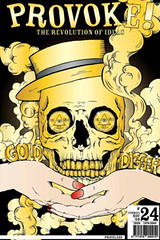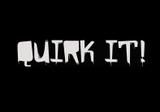Sunday, 7 December 2008
How Tattoos Work
The needle deposits a drop of ink each time it pierces the skin.
The tattoo machine has remained relatively unchanged since its invention by Samuel O'Reilly in the late 1800s. O'Reilly based his design on the autographic printer, an engraving machine invented by Thomas Edison. Edison created the printer to engrave hard surfaces. O’Reilly modified Edison’s machine by changing the tube system and modifying its rotary-driven electromagnetic oscillating unit to enable the machine to drive the needle.
Modern tattoo machines have several basic components:
- A sterilized needle
- A tube system, which draws the ink through the machine
- An electric motor
- A foot pedal, like those used on sewing machines, which controls the vertical movement of the needle.
When you look at a person's tattoo, you're seeing the ink through the epidermis, or the outer layer of skin. The ink is actually in the dermis, which is the second layer of the skin. The cells of the dermis are far more stable than the cells of the epidermis, so the tattoo's ink will stay in place, with minor fading and dispersion, for a person's entire life.


















0 comments:
Post a Comment